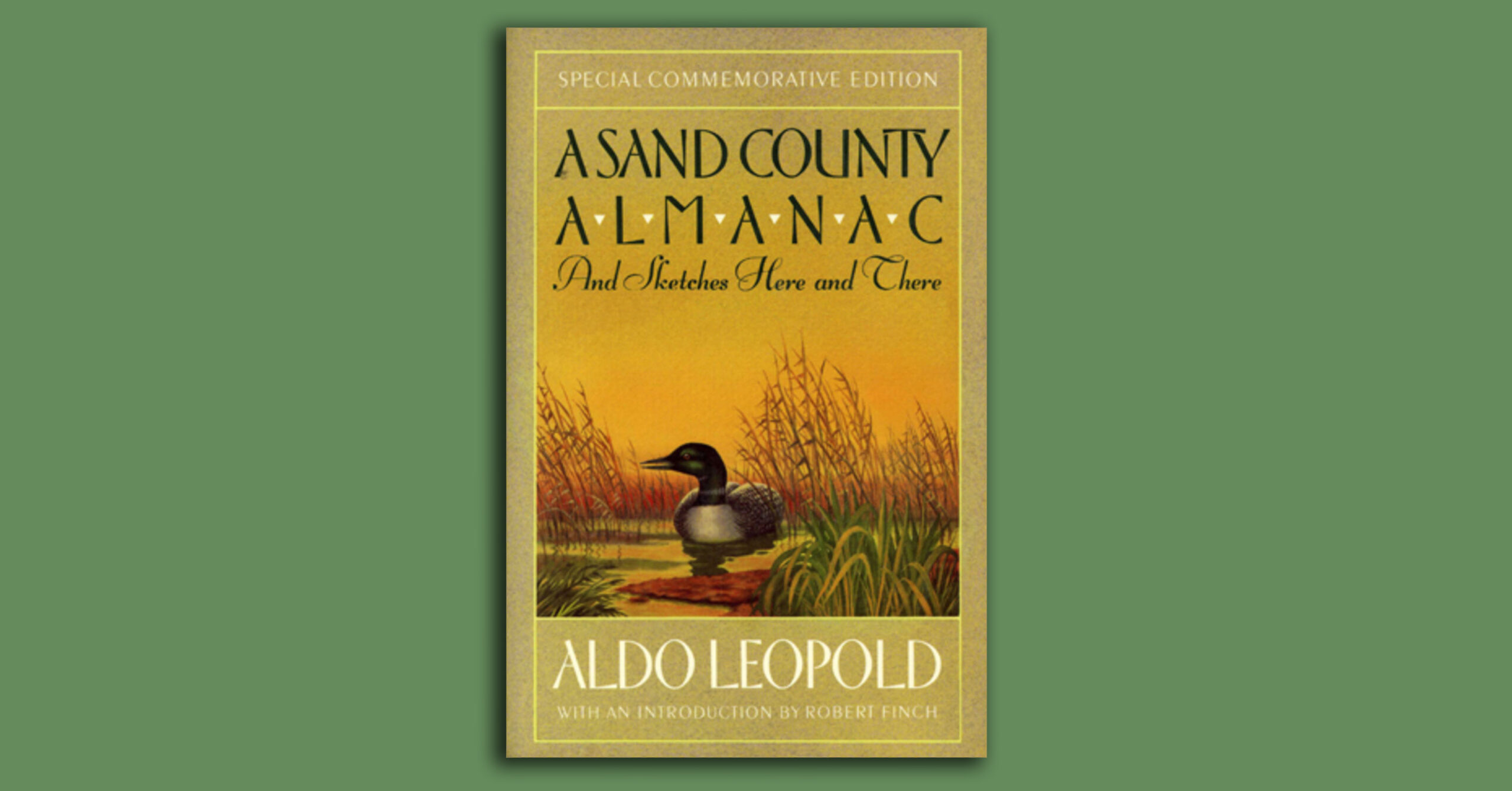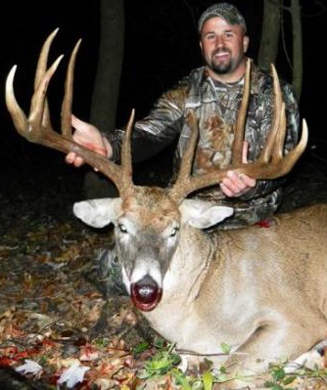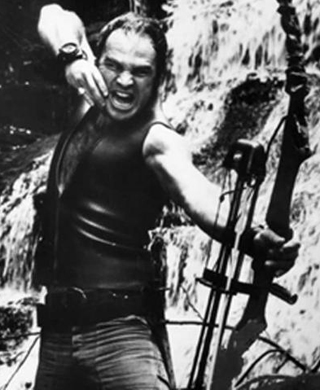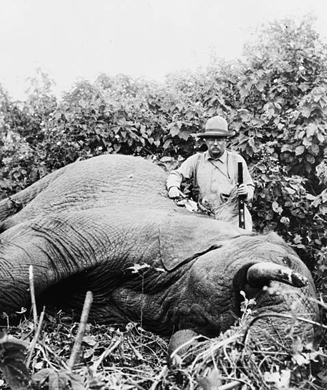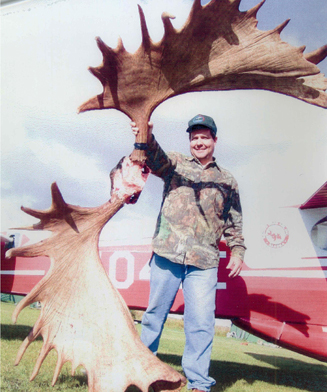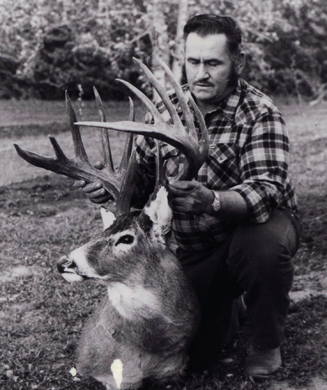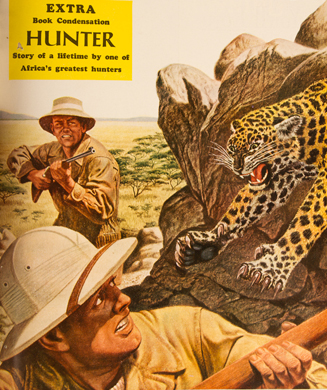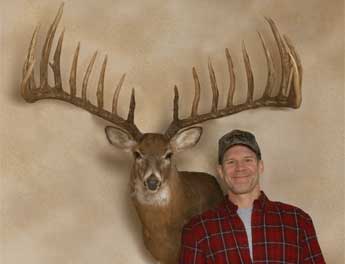We’ve put together the Top 20 hunting and fishing books that are bound to please anyone. From Hemingway to O’Connor to Leopold, this list has all the greats.
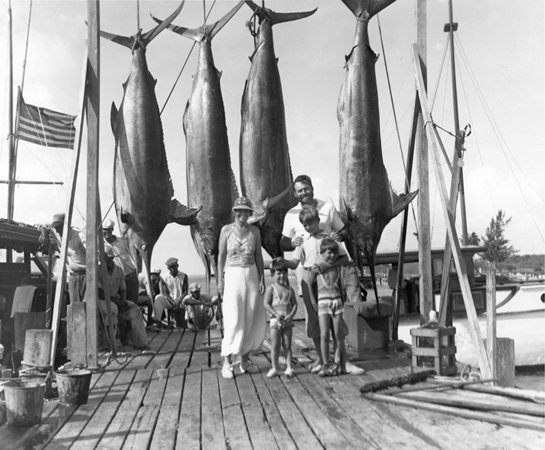
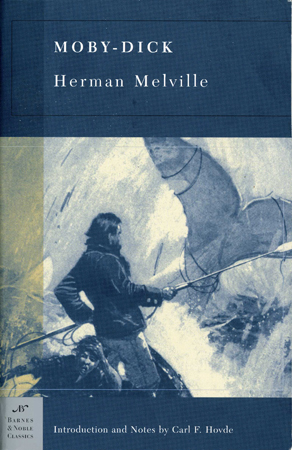
Herman Melville Yes, I'm serious. This is the greatest fishing story ever told (it also might be the longest). I know, whales are mammals, but stick with me here. Melville spent years on a whaling ship, toiling alongside men from around the world. Both are reflected in elaborate detail describing the whaling profession and the men professing it. The narrator, Ishmael, puts up with Captain Ahab–the fish-crazed captain who will stop at nothing until he catches that one fish. Sound like a fishing buddy you might know? I know the book is long, but if you buy a cheap copy and literally cut it into 100 page chunks, it makes it more manageable. It may take you a lifetime to read it, but try it anyway. Better save up for that first edition. They range up to $85,000. I wouldn't suggest slicing that one up. Free Use
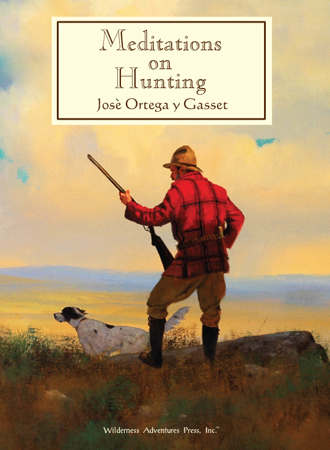
Jose Ortega y Gassett Few real philosophers have ever given hunting much ink. Sure, they love to run circles around the meaning of life, but I doubt many have been elbows deep in an elk's chest cavity. Yet one Spanish philosopher, Jose Ortega y Gassett is the exception. In the early 1900s, he wrote "Meditations on Hunting," which for being 100 years old, is still an applicable and entertaining read on hunting. And most importantly, it's accessible, meaning you don't need a Ph. D to "get it." Gassett clues us in on what hunting does for our soul and gives us a little insight on what we should get out of it. For example, take this great excerpt: "Tis the reason men hunt. When you are fed up with the troublesome present, with being 'very twentieth century,' you take your gun, whistle for your dog, go out to the mountain, and, without further ado, give yourself the pleasure during a few hours or a few days of being 'Paleolithic.'" That's philosophy I can relate to. A first edition in good condition will run you $130. Free Use
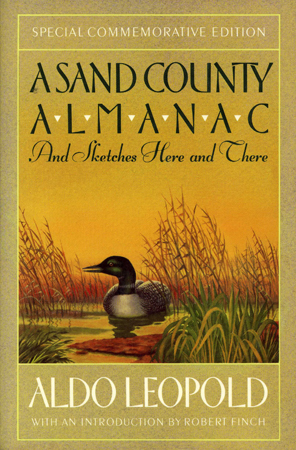
Aldo Leopold Published in 1949, A Sand County Almanac is as much a treatise on wildlife management as it is on hunting. While the title may not be flashy or sound that intriguing, this book should be on the bookshelf of every person who cherishes the outdoors and the bounty of wildlife it has to offer. It doesn't hurt to read it, either. At times, Leopold will make you question your own motives on why you hunt. Are you after the antlers? The chase? The feeling of self-reliance? Other times, he'll make you feel just plain guilty about all that money you spend on fancy gear. But he makes up for it with passages like this: "Man always kills the things he loves, and so we pioneers have killed our wilderness. Some say we had to. Be that as it may, I am glad I shall never be young without wild country to be young in. Of what avail are forty freedoms without a blank spot on the map." A first edition will run you between $200 and $500, and that includes the dust jacket. Free Use
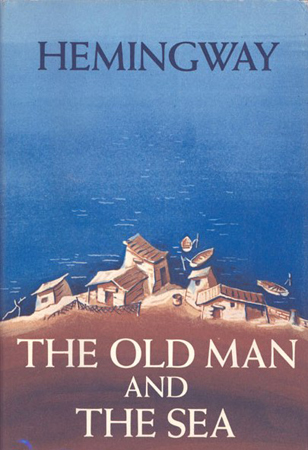
Ernest Hemingway A product of Hemingway's Cuba years, the Old Man and the Sea is Papa's Moby Dick. Though still a classic, this story replaces a marlin for a whale, and a young apprentice for Ishmael. Even so, it is still a great fishing story and quite a bit shorter than Moby Dick. Sanitago is an ancient fisherman who's had a streak of bad luck. The village loses confidence in his abilities as a fisherman, and he finally braves the currents of the Gulf Stream. Here, he lands a marlin of epic size, struggles to land it and bring it home. "You did not kill the fish only to keep alive and to sell for food, he thought. You killed him for pride and because you are a fisherman," Hemingway writes. "You loved him when he was alive and you loved him after. If you love him, it is not a sin to kill him. Or is it more?" Quotes like this one make Hemingway loved by fisherman and hunters alike. It's possible to find a first edition on Ebay for less than $100. Free Use
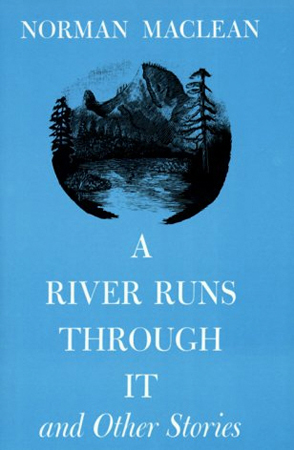
Norman Maclean As a disclaimer, I live and play a stone's throw from Montana's Blackfoot River of Maclean's classic tale made famous by the movie of the same name. Maclean starting writing fiction near the end of a very full life, which is likely why so many love his novella that isn't so much about fishing as it is about life–fishing just happens to make a nice backdrop. It's a tale of family written like poetry. For instance, Maclean writes, "My father was very sure about certain matters pertaining to the universe. To him all good things-trout as well as eternal salvation-come by grace and grace comes by art and art does not come easy." In his younger years during WWI, Maclean worked in logging camps and for the Forest Service just south of Missoula. He then had a life of academia in the East and Midwest until he died in Chicago in 1990. A first edition will run around $200. An original dust-jacket will triple the price tag. Free Use
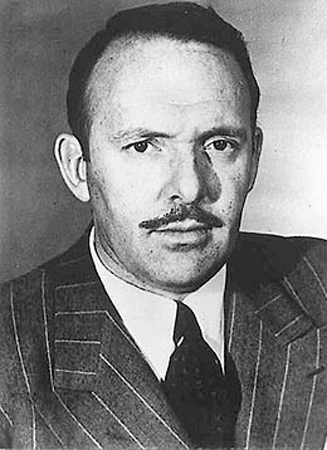
Robert Ruark Robert Ruark was destined to write. He entered the University of North Carolina at 15, and received a journalism degree around the time of the Depression. He bounced around reporting here and there, and served in the Navy during WWII. Eventually, he went on safari to Africa, wrote about it, and landed a gig at Field & Stream to write a series called The Old Man and the Boy, which ran for nearly a decade. Much of the stories, both fishing and hunting, are based loosely on his life growing up. It's packed with simple stories of deep meaning. If there is a non-hunter among your family who just doesn't understand why you freeze your tail off in that duck blind, then this is a gift for both of you. A nice first edition is only $26 online. free use
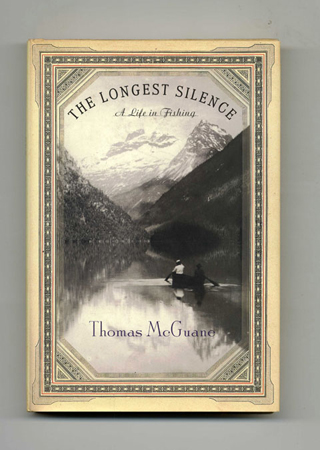
Thomas McGuane At times, McGuane's real life reads like a fiction novel. Hollywoods affairs, wrecks in the Porsche, a number of failed marriages, successful screenplays with Jack Nicholson and Marlon Brando–and that's not even why I'm writing about him. All the while, McGuane seemed to find the time to wet a line. In 33 essays, McGuane takes us around the world pursuing fish and life in The Longest Silence. In a classic selection from the book's namesake essay, he writes: "What is emphatic in angling is made so by the long silences–the unproductive periods. For the ardent fisherman, progress is towards the kinds of fishing that are never productive in the sense of the blood riots of the hunting-and-fishing periodicals. Their illusions of continuous action evoke for him, finally, a condition of utter, mortuary boredom." First editions are cheap and easy to come by. Try to get it signed. Best to travel to Livingston, Montana, and fish the West Boulder River, hoping McGuane himself might walk by in his waders. Free Use
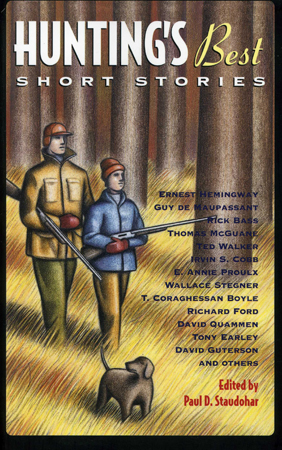
Various Authors Hemingway, Quammen, McGaune, Bass–all fine writers and all masters of the short story. If you're not familiar with these writers, then this anthology of more than 20 short stories might be right for you. It's a sampler of the best hunting writers out there. One story by David Quammen, "Walking Out" tells the tale of an estranged father and son who hunt moose in Montana. Seems normal enough, but winter comes early, and when a grizzly threatens both father and son, it turns out they should be afraid of each other more than any grizzly. You should be able to find this for $20 or less. Free Use
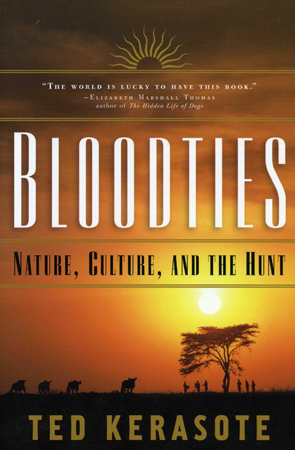
Ted Kerasote Why do you pass up younger, smaller-antlered bucks when you know they taste better? Ted Kerasote might have the answer. Then again, he may just leave you more confused than ever. But that's not really a bad thing because, in the end, he makes you think. His book Bloodties is an entertaining safari across the globe. Broken into three parts, he devotes the first portion of his book to subsistence hunting with the Inuit on the coast of Greenland. Then he explores a vastly different side of hunting as he travels to the Siberian wilderness with Western sportsmen as they bag trophy after trophy–most times legally. As you can imagine, the contrasts of the two ways are black and white, yet Kerasote writes it as he sees it through an objective lens and lets you make up your own opinion. Free Use
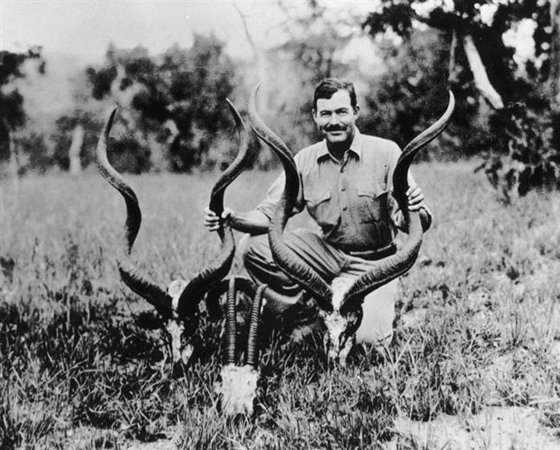
Ernest Hemingway It's no secret Hemingway enjoyed hunting. And this second work of non-fiction from him chronicles his 1933 African safari. While he recounts his hunting conquests, he also includes a mini-treatise on the writers of his day and of days past. He also lets readers in on what he thinks makes a good writer. He even offers up some advice. He writes: "First, there must be talent, much talent. Talent such as Kipling had. Then there must be discipline. The discipline of Flaubert. Then there must be the conception of what it can be and absolute conscience as unchanging as the standard meter in Paris, to prevent faking. Then the writer must be intelligent and disinterested and above all he must survive." If that doesn't work for you, there is still plenty of history on Africa and plenty of hunting. A signed first edition will cost you a new F-150. Or, you can go online and get a paperback version for about $10. Free Use
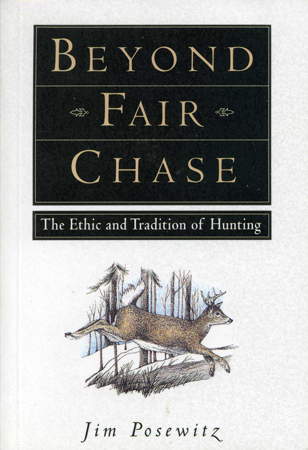
Jim Posewitz Unlike many of these authors, Jim Posewitz is still very much alive, and if you hunt the mountains around Helena, Montana, you're likely to run into him hunting elk. In much the same vein as Leopold and Gasset, Posewitz's book "Beyond Fair Chase" makes us stop and really think about hunting. He writes of ethics and our quest for the "big one." He writes, "Trophy scoring and big game contests come perilously close to, and sometimes cross, the line of proper ethical practice." You may not agree, but at least he got you thinking. Small enough to stuff in a chest pocket, this book should accompany you to the tree stand, blind or hillside. It weighs next to nothing, but the message it sends is heavy enough to keep you warm in the early morning. I got my book in a Montana Hunter Safety class and it hasn't left my hunting pack since. My first edition was free. Free Use
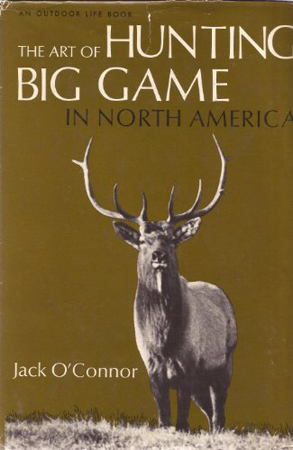
Jack O'Connor Most of us have all heard of Jack O'Connor. For some of us, his adventures told through the pages of Outdoor Life were the reason we made it through winter, spring and summer, waiting desperately for fall to arrive. O'Connor's 17th book, The Art of Hunting Big Game in North America is arguably O'Connor's best and most complete. And he would agree, writing, "If I had to leave one book to each of my numerous grandsons to remember his grandfather by it would be The Art of Hunting, as I have always called it." He wrote it when he was 65, packing it tight with his accumulated knowledge of flora, fauna, habits, habitat, loads and rifles for all of North America's big game. He takes you hunting with him, and makes sure you learn something along the way. I found a first edition online for only $60! Free Use
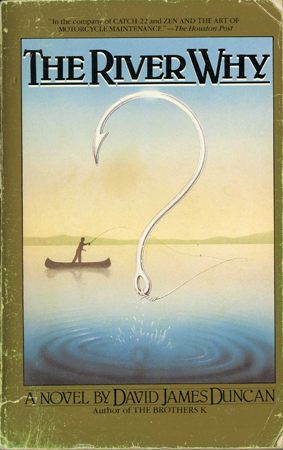
David James Duncan I admit that I fish with a spoon and spinning reel. And I like it! I've tried my hand at a six-weight, and would rather let a random dog lick peanut butter out of my mouth than spend any more time in the willows trying to untangle a $5 fly. But that's not to say I don't mind reading stories about fly-fishing, especially ones by David James Duncan. The River Why follows Gus Orviston as he leaves home and comes of age on Oregon's rivers. Duncan is able to weave some politics, environmentalism and a whole lot fishing into a novel that should find its way to your vest when the fish aren't biting. It was even made into a movie in 2010 starring no one you've ever heard of. First editions can be found for $1 and worth every penny. Free Use
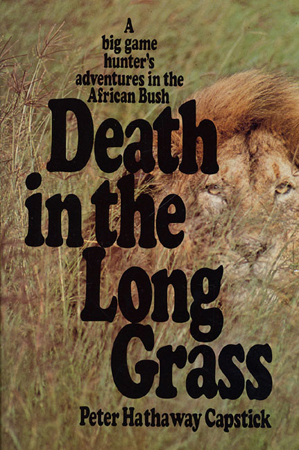
Peter Capstick There are a lot of things in Africa that want to kill you. And Peter Capstick has firsthand knowledge and experience with just about every one of them. While many of the books on this list are thinkers, Death in the Long Grass is pure excitement. From wounded cape buffalo, to lions, to black mambas and wild dogs, Capstick leaves no round chambered. While his prey has character, Capstick himself had plenty of it as well. At 30, he left behind Wall Street to hunt in Central and South America, finally ending up in Africa where he worked as hunter and ranger. Heavy drinking and smoking caught up with him at age 56, and he died from complications of heart surgery. Free Use
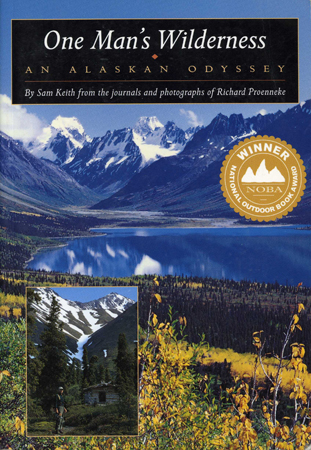
Richard Proenekke If you've ever attempted to grow a beard during hunting season, then chances are Richard Proenneke is the man you tried to become. He was a trained diesel mechanic and came to Alaska in 1950. When a retired Navy captain hosted Dick at his remote, fly-in cabin in the Twin Lakes country of backwoods Alaska, Dick hung up his monkey-wrench and retired at age 50. Well, he kind of retired. With his ax and some serious elbow grease, Dick built himself a cabin and all the while chronicled his adventures in a journal, which are condensed in this book, and he also filmed it, producing Alone in the Wilderness. In both the book and movie, Dick's life revolves around Alaska's seasons. When his meat cache gets low, he takes to the high country for some goat meat. He gets back to camp and smokes it in its own hide. Why did he spend 30 years of his life alone in the wilderness? Maybe this quote from him will clue you in: "It was good to be back in the wilderness again where everything seems at peace. I was alone; just me and the animals. It was a great feeling–free once more to plan and do as I please. Beyond was all around me. A dream was a dream no longer. I suppose I was here because this was something I had to do." Intrigued? Check out the website to learn more: www.dickproenneke.com. Free Use
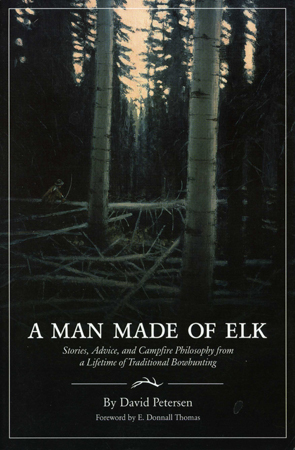
David Peterson If you've ever thought of bowhunting elk…wait. If you've ever hunted anything, then you should read a little David Peterson. A man not afraid to speak his mind, Peterson gets you up close and personal with every animal he writes about. His hunts involve a dance with prey that many of us don't experience because he hunts with a longbow and a quiver full of patience. He takes you with him for his hits and plenty of misses, and does so in a way that makes you want to become a better hunter. Twenty bucks is money well spent on anything by David Peterson. Free Use
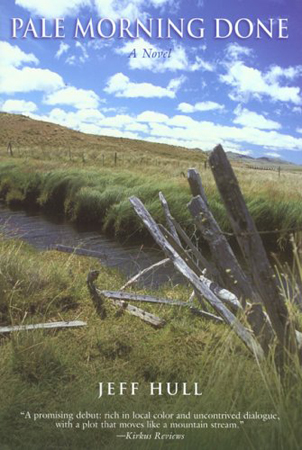
Jeff Hull While most books on fishing are a collection of essays, this debut novel by Montana writer, Jeff Hull, gives us, dare I say it, a plot, characters and a story line. Not many of us have the luxury of inheriting our family's ranch, but Hull's protagonist, Marshall Tate, does just that and with it, inherits a mess of problems. David James Duncan, who is also on this list, had this to say about the novel: "Jeff Hull has taken a pack of noncommitting males and females, slackers, trustifarians, hustlers and bullies, armed them with boats and flyrods, unleashed them on my favorite waters, committed the cardinal sin of naming the waters, and turned this betrayal into one of the great fly fishing novels of our time." I think the only edition is a first edition. You can pick one up for the price of a coffee. Free Use
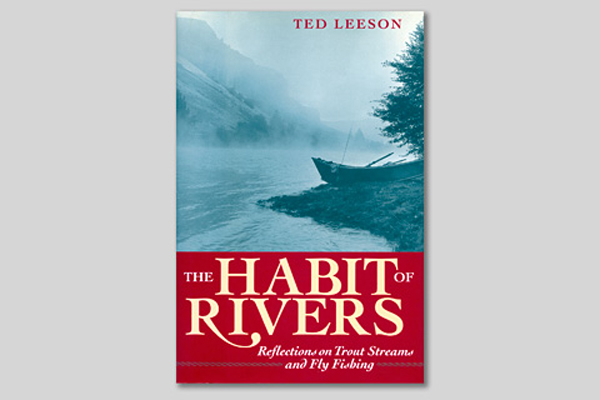
Ted Leeson Let Ted Leeson help you explore your inner trout. But be warned. If you're looking for an entertaining distraction with plot, characters and maybe even some resolution, you might want to look elsewhere. This here is a thinker. It's a book about being out on rivers and what it means to be there. First editions are $10 and if you hang around the English Department at Oregon State University where Leeson teaches, you may even get him to sign it. Free Use
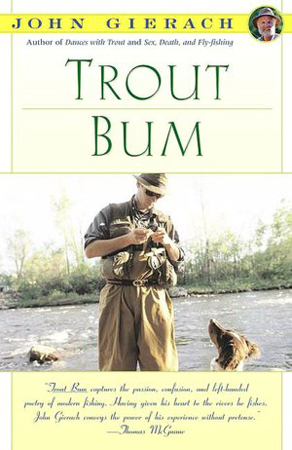
John Gierach A bum without any sort of qualifier like 'ski' or 'surf' is just a bum. One cannot just be a bum and be socially acceptable. No, to be a respected bum, one must have a past-time, a hobby, and said hobby should cost a lot of money for one to be recognized as such a bum. Enter the trout bum. I've known a few in my day. They smell, and tend to drink too much, but they pay their rent on time, in cash, and fork over a deposit for their black lab named Midge. Trout Bum is a collection of essays about all things trout. It's written in flowing language that makes it a fine option to throw in the glove box for road trips. Gierach has an uncanny ability to write down exactly what fishermen are thinking, even if they've never said it out loud. "The hatch is the Blue-winged Olive so common in the West," he writes. "It's a perfect emergence from the fly-fisher's point of view: heavy enough to move all but the very largest of the trout but not so heavy that your pitiful imitation is lost in such a crowd of bugs that the surface of the stream seems fuzzy." Free Use
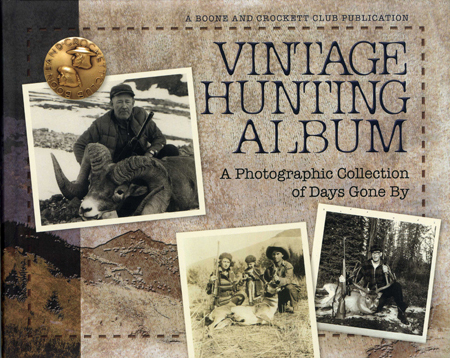
Boone and Crockett Club If the hunter on your list doesn't exactly like words, but he does like looking at old-time photos of his brothers out in the bush, then this is what they want. The folks at the Boone & Crockett Club have been collecting old hunting photos for more than a century. This book is packed with photos from the late 1800s on. Check out the vintage firearms, knives and a whole lot of wool. For $30, it's a fun book to have on the coffee and on the bookshelf. Boone and Crockett Club
